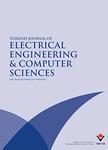版权所有:内蒙古大学图书馆 技术提供:维普资讯• 智图
内蒙古自治区呼和浩特市赛罕区大学西街235号 邮编: 010021

作者机构:Univ Technol Baghdad Dept Comp Engn Baghdad Iraq Gaziantep Univ Fac Engn Dept Elect & Elect Engn Gaziantep Turkey
出 版 物:《TURKISH JOURNAL OF ELECTRICAL ENGINEERING AND COMPUTER SCIENCES》 (土耳其电机工程与计算机科学杂志)
年 卷 期:2018年第26卷第6期
页 面:2943-2957页
核心收录:
学科分类:080801[工学-电机与电器] 0808[工学-电气工程] 08[工学] 0812[工学-计算机科学与技术(可授工学、理学学位)]
主 题:BVIRE algorithm linear regression model RFID indoor location RSSI
摘 要:Traditional indoor location technologies such as infrared technology and ultrasonic technology are complex, expensive, or having unsatisfactory location accuracy. Radio frequency identification (RFID) technologies are very popular in many areas since their costs are very low. The tag in such technologies acts as the transmitter, and the radio signal strength indicator (RSSI) information is measured at the reader. However, RSSI information suffers strictly from the multipath circumstance and circumferential elements. Therefore, the localization accuracy of the boundary will be affected severely. In order to solve this problem, we introduce the boundary virtual reference label (BVIRE) algorithm to well utilize RFID techniques for locating the tracking object, which inserts some virtual reference tags on the boundary by establishing a linear regression model that eliminates unwanted tag information from the estimation procedure. The positioning accuracy of the boundary tags and stability have been improved significantly, at least 78%, without adding extra reference tags or radio frequency interference. Also, the estimation errors of our improved BVIRE are much smaller compared to the virtual reference label, location identification based on the dynamic active RFID calibration (LANDMARC), ultrawide band, RADAR, and PinPoint algorithms.